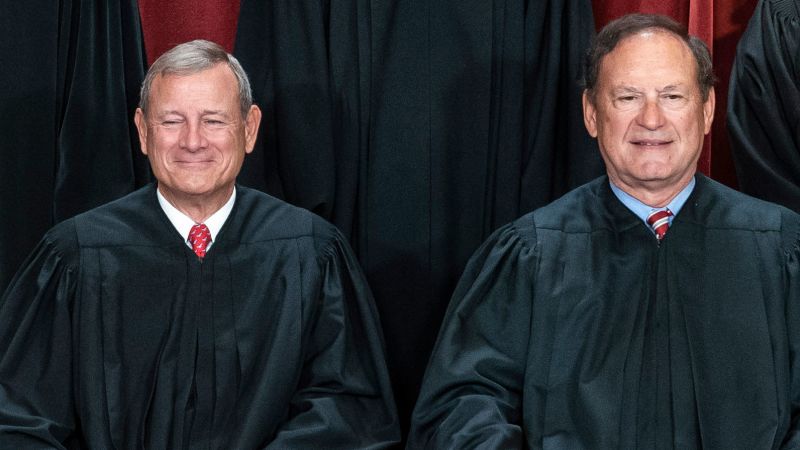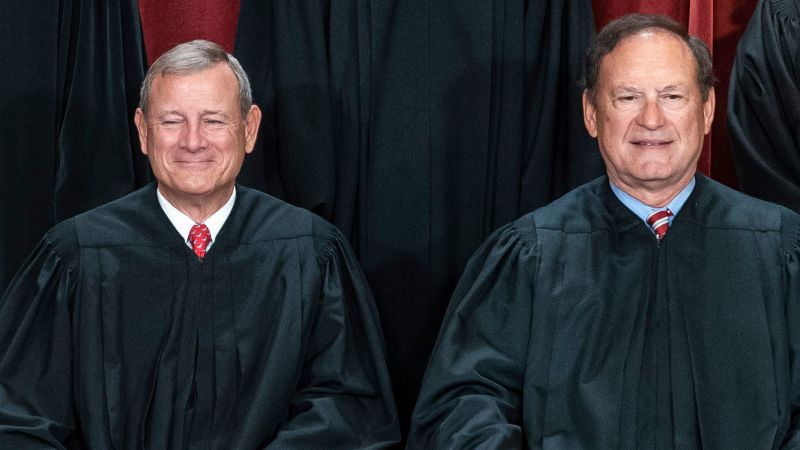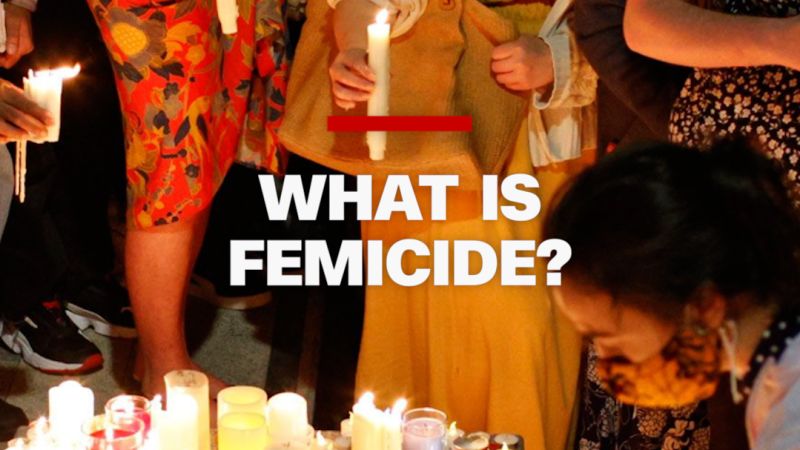The Roberts And Alito Courts: Assessing Two Decades Of Judicial Decisions

Welcome to your ultimate source for breaking news, trending updates, and in-depth stories from around the world. Whether it's politics, technology, entertainment, sports, or lifestyle, we bring you real-time updates that keep you informed and ahead of the curve.
Our team works tirelessly to ensure you never miss a moment. From the latest developments in global events to the most talked-about topics on social media, our news platform is designed to deliver accurate and timely information, all in one place.
Stay in the know and join thousands of readers who trust us for reliable, up-to-date content. Explore our expertly curated articles and dive deeper into the stories that matter to you. Visit Best Website now and be part of the conversation. Don't miss out on the headlines that shape our world!
Table of Contents
The Roberts and Alito Courts: Assessing Two Decades of Judicial Decisions
The Supreme Court's composition significantly shapes the legal landscape, and the past two decades have witnessed profound shifts under Chief Justices John Roberts and the influence of Associate Justice Samuel Alito. This article analyzes the key characteristics and impact of these courts, examining landmark decisions and their broader implications for American society.
The Roberts Court: A Pragmatic Approach?
Chief Justice John Roberts, appointed in 2005, initially projected an image of judicial restraint and consensus-building. However, the reality has been far more complex. While he has occasionally sided with the Court's liberal wing, his leadership has overseen a significant rightward shift, particularly on issues of federal power and individual liberties.
Key Characteristics of the Roberts Court:
- Increased focus on state sovereignty: Decisions like Shelby County v. Holder (2013), which gutted a key provision of the Voting Rights Act, and various cases limiting federal environmental regulations reflect a growing emphasis on states' rights.
- Conservative interpretation of the Constitution: The Roberts Court has generally favored originalist and textualist approaches to constitutional interpretation, often leading to narrower readings of constitutional protections.
- Shifting views on campaign finance: The Court's decisions on campaign finance have largely favored deregulation, raising concerns about the influence of money in politics. This is a continuing area of debate and legal challenge.
- Controversial decisions on abortion rights: While Roe v. Wade remained in place during much of the Roberts Court's tenure, the gradual erosion of abortion rights through cases like Planned Parenthood v. Casey (1992) ultimately culminated in its overturning with Dobbs v. Jackson Women's Health Organization (2022).
The Rise of Justice Alito and the Conservative Bloc:
Associate Justice Samuel Alito, appointed in 2006, has emerged as a key figure in the Court's conservative bloc. His opinions often reflect a strong adherence to originalism and a skepticism towards expansive interpretations of constitutional rights. His influence, coupled with the appointments of Justices Gorsuch, Kavanaugh, and Barrett, has solidified the Court's conservative majority.
Alito's Impact on Key Areas of Law:
- Second Amendment rights: Justice Alito's opinions have significantly broadened the scope of Second Amendment rights, leading to challenges to gun control measures nationwide. This has been a particularly contentious area of legal debate.
- Religious freedom: Alito has been a vocal advocate for religious freedom, penning majority opinions that have expanded the scope of religious exemptions in various contexts.
- Affirmative action: The Court's recent decision in Students for Fair Admissions, Inc. v. President & Fellows of Harvard College (2023), which effectively ended affirmative action in higher education, bears the strong influence of Justice Alito's conservative jurisprudence.
Looking Ahead: The Long Shadow of Two Decades
The Roberts and Alito Courts have left an undeniable mark on American law. Their decisions have reshaped the balance of power between the federal government and states, redefined fundamental rights, and ignited ongoing political and legal battles. The long-term consequences of these rulings will continue to be debated and litigated for years to come. Understanding this historical context is crucial for comprehending the current legal landscape and predicting future developments. Further research into specific cases and their societal impact is encouraged for a deeper understanding of this transformative period in American jurisprudence.
Call to Action: What are your thoughts on the impact of the Roberts and Alito Courts? Share your perspective in the comments below!

Thank you for visiting our website, your trusted source for the latest updates and in-depth coverage on The Roberts And Alito Courts: Assessing Two Decades Of Judicial Decisions. We're committed to keeping you informed with timely and accurate information to meet your curiosity and needs.
If you have any questions, suggestions, or feedback, we'd love to hear from you. Your insights are valuable to us and help us improve to serve you better. Feel free to reach out through our contact page.
Don't forget to bookmark our website and check back regularly for the latest headlines and trending topics. See you next time, and thank you for being part of our growing community!
Featured Posts
-
 Transparency Concerns Jon Jones On Ufcs Handling Of Aspinall Injury
May 20, 2025
Transparency Concerns Jon Jones On Ufcs Handling Of Aspinall Injury
May 20, 2025 -
 Moodys Downgrade Ignored S And P 500 Dow And Nasdaq Post Strong Gains
May 20, 2025
Moodys Downgrade Ignored S And P 500 Dow And Nasdaq Post Strong Gains
May 20, 2025 -
 A Third Decade Dawns Assessing The Judicial Records Of Justices Alito And Roberts
May 20, 2025
A Third Decade Dawns Assessing The Judicial Records Of Justices Alito And Roberts
May 20, 2025 -
 Eurovision 2025 A Close Race Austria Wins Uks Disappointing Finish
May 20, 2025
Eurovision 2025 A Close Race Austria Wins Uks Disappointing Finish
May 20, 2025 -
 Masters Of Ceremony Warbond Pack Arrives In Helldivers 2 On May 15th
May 20, 2025
Masters Of Ceremony Warbond Pack Arrives In Helldivers 2 On May 15th
May 20, 2025
Latest Posts
-
 The Rise Of Femicide Understanding The Global Crisis And Its Causes
May 20, 2025
The Rise Of Femicide Understanding The Global Crisis And Its Causes
May 20, 2025 -
 Mass Pachyrhinosaurus Grave Discovered A Canadian Paleontological Puzzle
May 20, 2025
Mass Pachyrhinosaurus Grave Discovered A Canadian Paleontological Puzzle
May 20, 2025 -
 Addressing Tourist Misconduct Bali Implements New Behavioral Guidelines
May 20, 2025
Addressing Tourist Misconduct Bali Implements New Behavioral Guidelines
May 20, 2025 -
 5 B Poured Into Bitcoin Etfs Understanding The Recent Rally
May 20, 2025
5 B Poured Into Bitcoin Etfs Understanding The Recent Rally
May 20, 2025 -
 Urgent Security Alert Legal Aid Data Breach Leaks Criminal And Personal Information
May 20, 2025
Urgent Security Alert Legal Aid Data Breach Leaks Criminal And Personal Information
May 20, 2025
